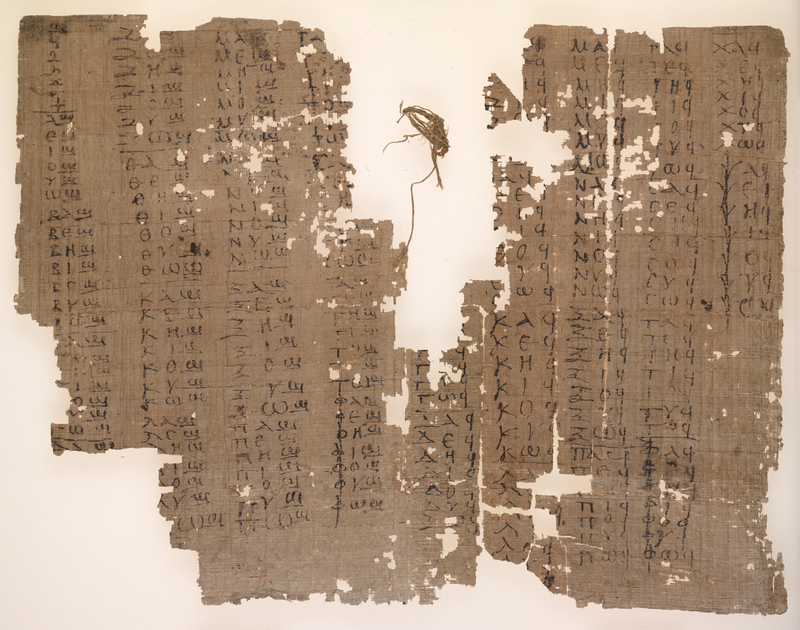Puzzle Me This: Early binding fragments from the Papyrology Collection
The purpose of this exhibit is to show these fragments, describe them, and challenge the viewer to study the fragments themselves, and imagine them as they once were, part of a valued and valuable early codex. To that end, images and models of similar surviving codices are an added part of this exhibit. The fragments appear to date from roughly the third to the ninth or tenth centuries, an estimate based purely on speculation and the comparison of these fragments to more intact survivors that have been loosely dated themselves by codicologists. The source of all of the fragments would appear to be Egypt, and it is very likely that the bindings were primarily made for Coptic texts. In fact, these are also speculations.
Many of the book cover and cartonnage fragments (cartonnage is the term used for book boards or the linings of leather covers formed from layers of papyrus and other materials) came to the University as part of sale lots of papyri being acquired for the collection. None of the book cover fragments in the collection appear to have any provenance connecting the cover to any of the text fragments in the collection. The book cover and cartonnage fragments may have been added to the sale lots as a bonus, with the thought that the cartonnage they contained or were made of might yield a lucky find in the form of a valuable text fragment. It was standard practice for a long time that cartonnage would be delaminated for just this purpose. Understandable, but unfortunate in that many ancient book covers, once separated from their texts, were stripped of their cartonnage and either disregarded or in some cases, discarded.

A School Exercise & Biblical Texts

